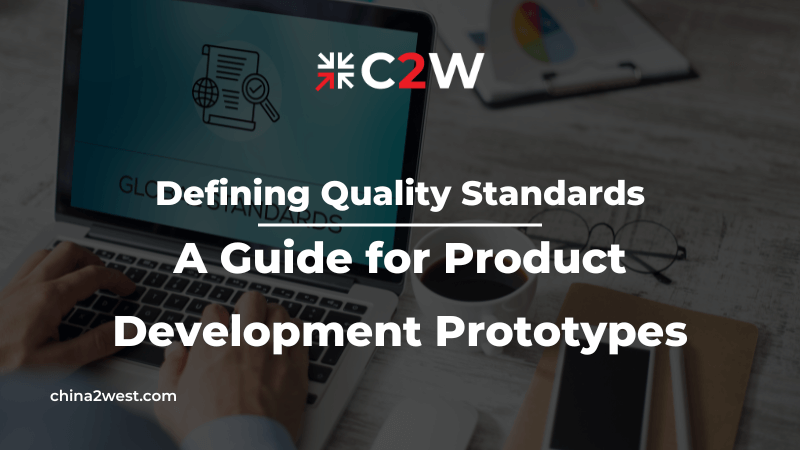When it comes to product development, creating a prototype is a crucial step in the process. However, it’s not just about crafting a model; it’s about setting the right quality standards to ensure the final product meets expectations. Defining quality standards for prototypes can make the difference between a successful launch and costly revisions. In this blog post, we will explore how you can establish clear, effective standards that will guide your prototype from conception to reality.
Understanding the Importance of Prototypes in Product Development
Prototypes are fundamental in the realm of product development, serving as a critical bridge between initial concept and mass production. They provide a tangible means for teams to explore design options, test functionality, and ultimately refine their vision into a feasible product. This early-stage model enables the detection of design flaws, functional deficiencies, or user experience issues that may not be apparent in digital mock-ups or theoretical designs.
Engaging with a prototype offers a unique opportunity to preemptively address these challenges, thereby reducing the risk of expensive modifications and delays later in the development cycle. Additionally, the presence of a physical prototype facilitates clearer communication and collaboration among project stakeholders. It allows for a shared, concrete understanding of the product’s attributes and potential, which is invaluable for securing buy-in and constructive feedback from investors, team members, and target users.
Establishing Clear Objectives for Your Prototype
Initiating the prototyping phase without a defined direction can lead to inefficiencies and misaligned efforts. Therefore, pinpointing the exact objectives for your prototype stands as a foundational step in the product development cycle. These objectives should be a reflection of the broader goals of the project, tailored to explore specific functionalities, design elements, or user interactions that require validation.
Consider questions like:
- Which features are we uncertain about?
- What assumptions need testing?
- How might the target user interact with this product?
The answers to these questions will shape your prototype’s purpose, guiding its development in a focused manner. This clarity not only ensures that your team channels its creativity and resources effectively but also sets a benchmark for evaluating the prototype’s performance. Objectives may range from assessing the feasibility of a novel mechanism and verifying the endurance of materials to gauging user engagement with the interface.
Identifying Key Quality Metrics for Prototypes
To effectively gauge the success of your prototype, pinpointing the essential quality metrics is a crucial step following the establishment of your objectives. These metrics act as tangible indicators of your prototype’s performance across various dimensions. For instance, accuracy, a key metric, measures how closely the prototype’s functions or dimensions replicate the intended design, highlighting the precision of production. Durability, on the other hand, assesses the prototype’s ability to withstand physical stress or environmental conditions, an essential factor for products expected to endure long-term use.
By rigorously assessing these metrics, you can ensure that your prototype not only adheres to your envisioned standards but also lays a solid foundation for the subsequent stages of product development. It’s about balancing ambition with feasibility, aiming to create a prototype that is both a testament to your project’s potential and a viable candidate for further refinement.
Setting Realistic and Achievable Quality Standards
In the journey of transforming a prototype into a tangible, market-ready product, the significance of establishing realistic and achievable quality standards cannot be overstated. These standards are not mere benchmarks but are integral in steering the development process within the realms of practicality. It is essential to balance high aspirations with the pragmatic aspects of product development, such as budget limitations, resource availability, and time constraints. Striking this balance demands a comprehensive understanding of the prototype’s critical aspects and a discerning approach to prioritize which features and functionalities are essential for the prototype to fulfill its intended purpose effectively.
Incorporating flexibility into these standards is crucial as it accommodates unforeseen challenges and innovations that may arise during the development process. This adaptability ensures that quality standards serve as a guiding framework rather than a rigid set of rules, fostering an environment where creativity and problem-solving thrive, ultimately leading to the development of a prototype that is both high-quality and feasible.
Implementing Quality Control Processes During Prototyping
Quality control during the prototyping phase is pivotal in maintaining the integrity of your product’s development cycle. Initiating rigorous quality control protocols early ensures that every aspect of the prototype aligns with your predefined quality standards. This involves systematic checks at various stages of prototype development, from initial design through to the creation of the physical model. Employing methods such as peer reviews, functionality testing, and stress testing allows for the identification and correction of potential defects or shortcomings before they escalate into more significant issues. Integrating these quality control measures requires a structured approach, including the designation of team members responsible for overseeing quality assurance and the development of a checklist based on the identified key quality metrics for your prototype. This proactive approach not only minimizes the risk of errors but also aids in optimizing the development timeline by preventing the need for extensive modifications. Engaging in quality control is a dynamic process that adapts as new insights are gained, ensuring the prototype evolves in a manner that consistently reflects the project’s quality aspirations.
Documenting and Communicating Quality Standards
Effective documentation and communication of quality standards are paramount for aligning team efforts during the prototyping phase. This involves creating a comprehensive record that delineates the expected performance, aesthetic criteria, and functionality benchmarks that the prototype must meet. A detailed document serves as a constant reference for team members, ensuring that every design choice and modification adheres to these predefined criteria. Moreover, by making this document accessible to all stakeholders involved in the project, it fosters an environment of transparency and shared understanding. Regular updates and discussions regarding these standards help in keeping the team aligned with the project’s objectives, facilitating a smoother development process. This documentation also plays a crucial role in the iteration cycles, providing a basis for evaluating the prototype’s evolution and guiding subsequent enhancements. Clear communication about these standards is essential not only for internal team dynamics but also for engaging with external partners and suppliers, ensuring that every contribution is consistent with the project’s quality expectations.
Conclusion
Defining quality standards for prototypes is an essential part of the product development process. By understanding the purpose of your prototype, setting key performance metrics, developing rigorous testing protocols, implementing quality control procedures, and communicating effectively, you can ensure that your prototype meets the required standards and sets the stage for a successful final product. Need help defining quality standards for your prototype? Contact us today to discuss your project and ensure your prototypes achieve the excellence you’re aiming for.




